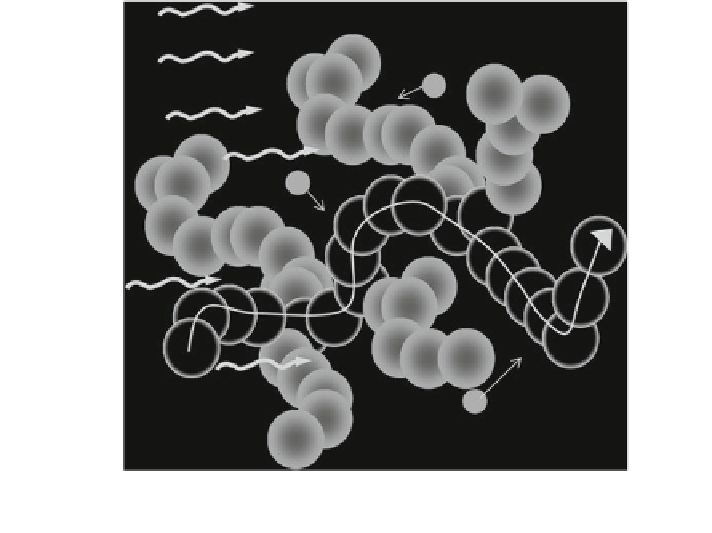Civil Engineering Reference
In-Depth Information
thermal radiation
gas molecules
heat transfer via
the backbone
Fig. 3 Heat transfer mechanisms within thermal insulations. Heat transfer takes place by heat
conduction via the solid skeleton and the gas phase and by thermal radiation
because of the limited free space, the relatively low temperature and non-existent
pressure differences in building applications.
The thermal insulation properties of an insulation material are determined by
the total effective thermal conductivity k
eff
, which is a temperature-dependent
material property and is defined by Fourier's law. In the case of a one-dimensional
insulation layer, Fourier's law is given by (Fourier
1822
)
q
¼
k
ð
T
Þ
T
h
T
c
Dx
ð
1
Þ
where q the heat flux density in Wm
-2
, k the thermal conductivity in Wm
-1
K
-1
and T
h
and T
c
the local temperatures at the hot and cold side of the thermal
insulation layer with the thickness Dx. The total effective thermal conductivity
could be described in a good approximation by the sum of the solid thermal
conductivity, k
s
, the thermal conductivity of the gas within a given porous
structure, k
g
, and the radiative thermal conductivity, k
r
, which reflects the involved
heat transfer mechanisms (Ebert
2011
):
k
eff
ð
T
;
p
g
Þ¼
k
s
ð
T
Þþ
k
g
ð
T
;
p
g
Þþ
k
r
ð
T
Þ;
ð
2
Þ
where T the temperature and p
g
the gas pressure. The solid thermal conductivity
depends on the chemical composition of the solid backbone, its structure (e.g.
powder, fibre, foam structure) and the effective density of the insulation material, q
(Lu
1991
; Scheuerpflug et al.
1991
):

